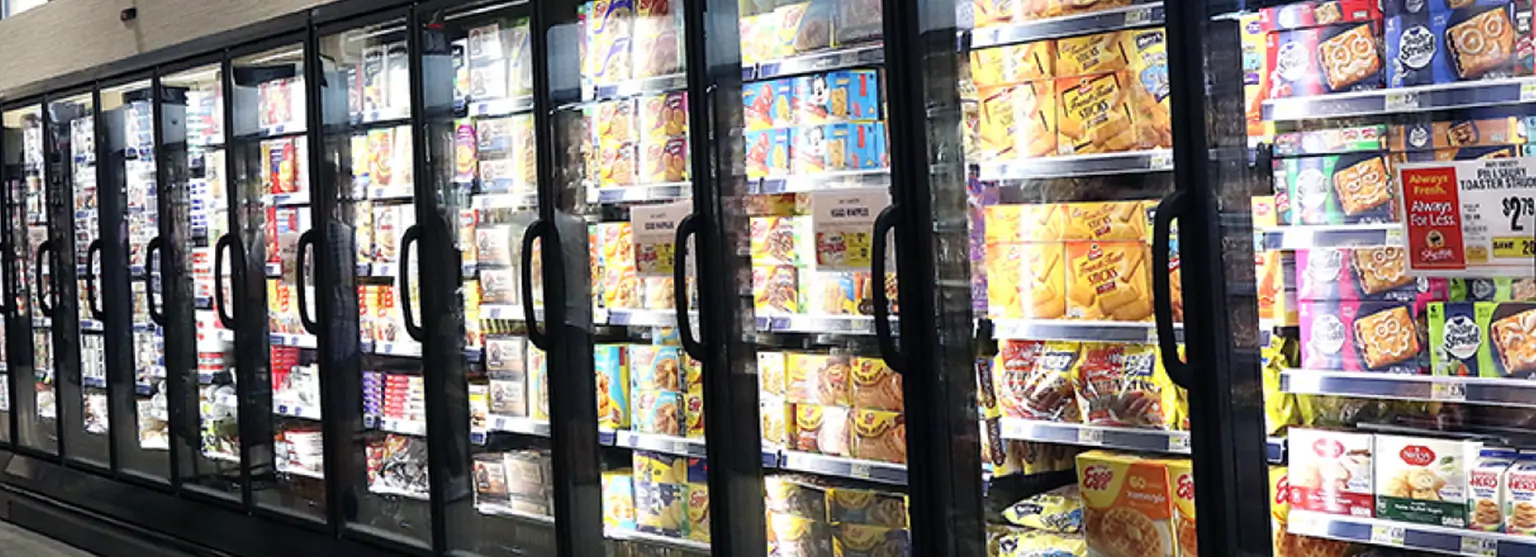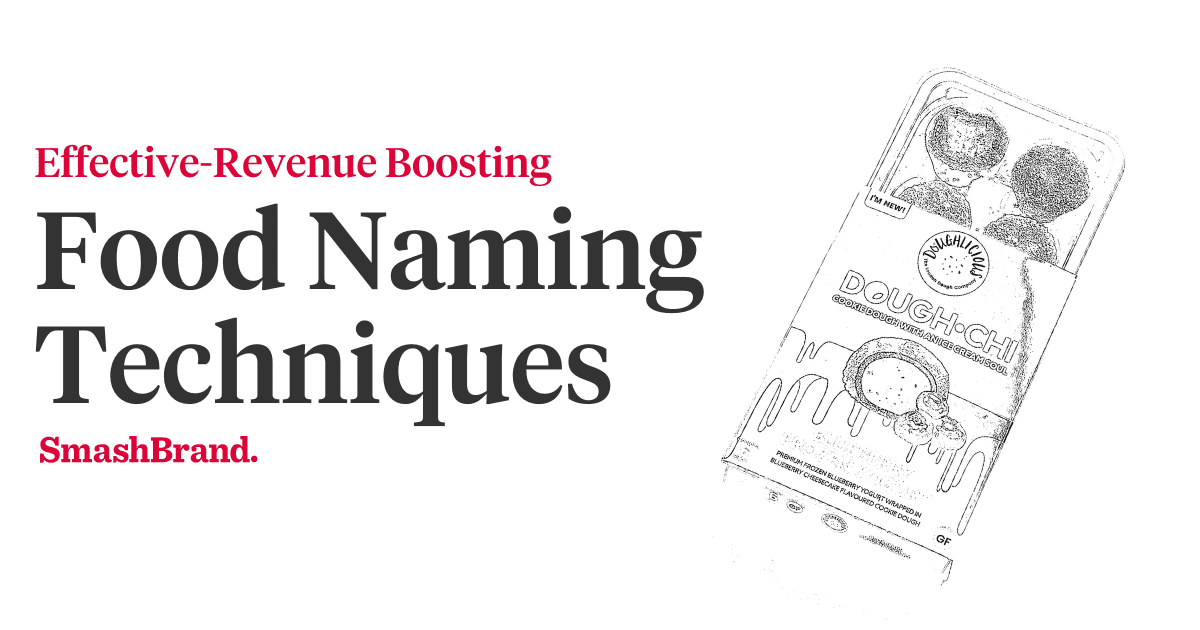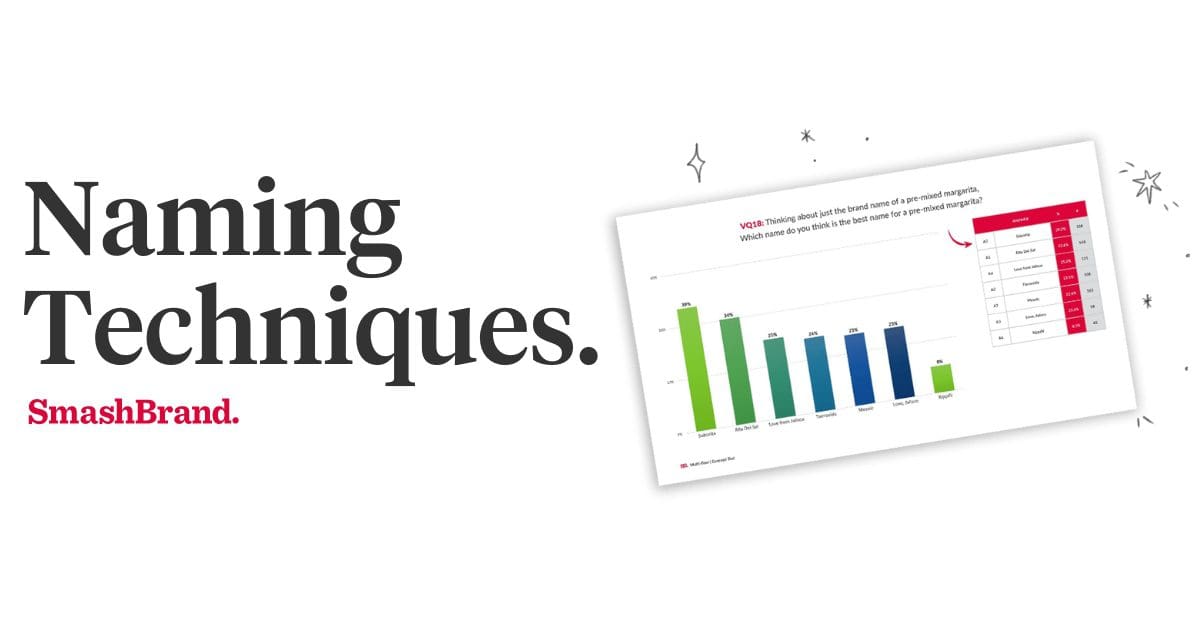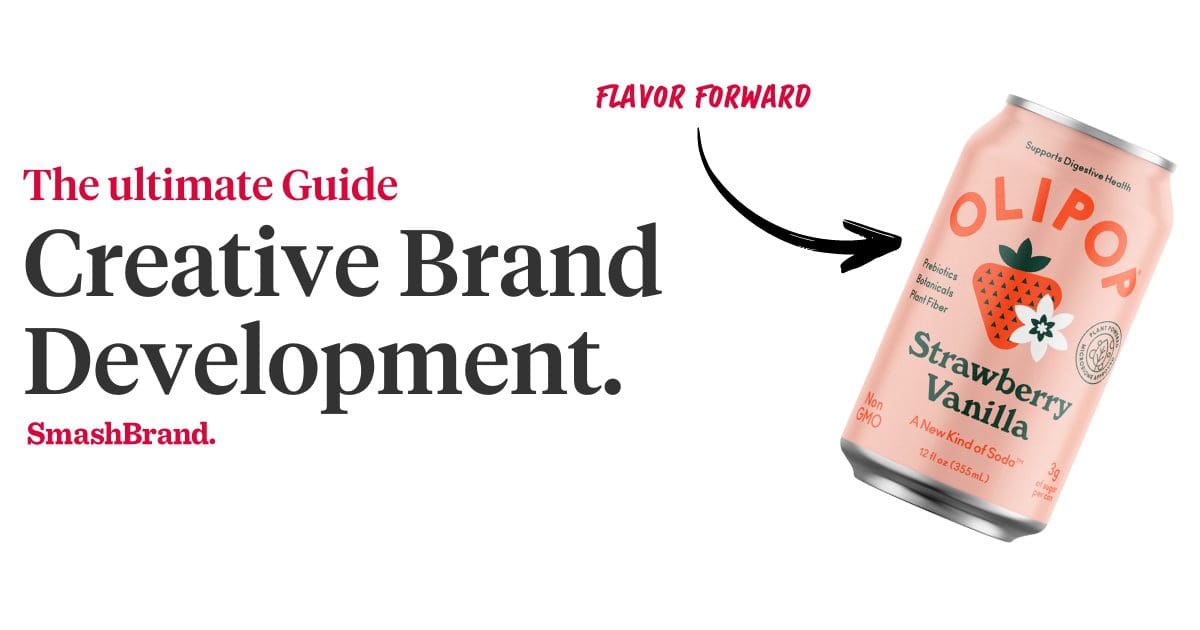Listen to This Article

We’ve got good news for existing or emerging brands looking to increase market share in the grocery store’s freezer aisle. The frozen food industry is continuing to see substantial growth with no plans of slowing down. In most fast-growing CPG categories, you can still achieve some success with average design effort, but that isn’t the case for frozen food packaging.
Unfortunately, try as we might, we cannot look past the bad news. Since refrigeration equipment comes at a heavy cost, grocery stores are not eager to increase their frozen food product inventory as a result of a category surge.
This means that in order to compete, you need more than a high-quality product. You need a frozen food packaging design that checks all the boxes for winning on-shelf (or in-freezer).
Get your Hands on the SmashReport!
And enter to win a FREE brand diagnosis worth $20,000.
*The SmashReport is a monthly newsletter for FMCG and CPG brands, helping them stand out in the competitive retail marketplace.
Why Frozen Food is Alive and Well
Statistica reports they expect the size of the global frozen foods market to increase by over 40 percent from 2018 to 2026. In 2018, the frozen food market captured 260.8 billion U.S. dollars. By 2026, they forecast the market for frozen food to grow to 366.3 billion dollars. Being halfway through this market expectation, we clearly see the growing trend of purchasing food items with indefinite expiration dates.
It isn’t just preventing food waste that keeps the frozen food aisle busy with consumers. Frozen foods are a compromise between fresh foods you prepare and paying top dollar for food prepared by a chef.
While frozen fruits and frozen vegetables once were the predominant products in retail freezers, times have definitely changed. Now, chef-inspired meals and desserts with unique packaging designs line the shelves, enticing us to try them.
What Retailers Are Looking For
A product that shows off the goods with the right design and packaging solution stands a chance of succeeding in the frozen aisle. But since consumers are more inclined to try products from this CPG category, brand recall and product experience are critical for frozen food products.
Flashy designs and trending ingredients are enough to create an initial purchase, but you need more if you hope to keep customers coming back time and time again.
Brand resonance needs to be a top priority in your packaging design strategy. Because of the recent trend, you are probably open to the idea of sustainability in your packaging strategy, but this is not enough. Does sustainable packaging separate you from thousands of ice creams or prepared meal competitors? Doubtful.
For frozen food items to become a grocery list staple, the purchase drivers must resonate with a very specific audience. Once achieving acceptance from a more niche shopper profile, then look to increase market saturation with your frozen food brand.
Go in with a “takeover” strategy and expect to be taken out of the store entirely.
Frozen Food Packaging Options
In case you are new to the frozen food industry, let’s briefly go over some of the standard frozen food packaging options. It is important to be aware of each option before beginning our package design strategy.
Tin Cans
The tin can is a traditional frozen food packaging material that’s been around for ages. But, alternative choices have taken over with economical options like PET and PE. Before giving up on this, think about how tin cans might help you not look like the competition.
Cardboard Boxes
The card stock used for making folded boxes is strong, but it has one drawback, its limited life span after being taken off of the freezer. This type of packaging does not do well with temperature transition.
The reason cardboard continues to be popular is that it is cost-effective compared with other types; but in most cases, there’s no going back if you’ve already opened your product!
PET
Polyethylene terephthalate (PET) is a strong material that can withstand temperature changes. Because of its durability, it’s often used for boil-in bags or microwaveable frozen product packaging.
Plastics
HDPE, LDPE, and Polypropylene are the most common plastics used for making frozen food packaging. These types of plastic can withstand a wide range of temperatures, making them perfect to store perishable goods like groceries or meats. They also prevent them from being damaged by outside elements during transportation to and from the grocery store.
PE
Polyethylene (PE) films are a good choice for food distribution during transportation, handling, and storage. Not only do they offer significant resistance to low-temperature conditions like -40 degrees Fahrenheit but also provide high mechanical strength with puncture capability during cold weather seasons.
Custom Packaging Solutions
It’s important to remember that at one point all packaging solutions were custom. The standard cardboard box, stand-up pouch, and air-tight barrier films we see in the freezer today required creativity and ingenuity to build such innovations. But to win anywhere in the grocery store, we can’t rest on our laurels, limiting ourselves to the innovations of yesterday.
When considering any food product design, think of ways to build a better mousetrap with your product. You won’t need a radical change for it to make an impact. In fact, subtle changes often give packaging the best results.
At SmashBrand, this is and always will be a part of our design-to-print process. Let’s give you a taste of what that looks like.
What are you freezing?
What do you think of first in your design process, the consumer or the product itself? Honestly, it really isn’t one or the other, it is a synchronistic activity. Your frozen food packaging strategy begins with the product and how it affects the consumer.
So in order to separate yourself from the competition, you first need to deeply, and we mean deeply, understand the food journey. How it exists in the grocery freezer, consumer freezer, microwave or oven, and on a plate at the table. Frozen food has many points of experience, so be certain that you are going step by step identifying problems your frozen food brand can solve during this journey.
Here are some examples to stir your appetite.
Frozen Meat Packaging
It is easy to see how frozen meat gets a bad rap (not in packaging) with campaigns such as Wendy’s “Fresh Never Frozen.” While fresh is almost always good, frozen is not always bad. Would you rather have a cut of meat that’s been sitting in a fridge for a week flash-frozen meat packed one month ago?
A frozen meat brand can compete against the butcher in the meat department with this. Stating how they process their meat and freeze it quickly, protecting the macro and micronutrients the meat contains.
Frozen Produce Packaging
Same story with a different twist. Fruits and vegetables spoil quickly, often at different times. It’s frustrating to think about a meal 3-days ahead only to have the required avocado ripen at the wrong time.
Frozen produce gives you the ability to schedule your meals in advance without worrying about timing each piece of produce in the recipe perfectly.
How can you convey this as a purchase driver on your packaging? The perfect message will take more thinking than the article provides. But consider ways to guarantee freezing each fruit and vegetable at the point of peak flavor.
Frozen Meal Packaging
Even in this world of meal prep foods, there still exists a stigma of frozen meals tasting like the cardboard that holds them. Imaging that jumps off the packaging, showcasing deliciousness, may not be enough for the preexisting idea in the consumer’s mind.
Instead, focus on your product packaging design. While cardboard is an inexpensive solution giving you plenty of room for graphic design, it still evokes a bland taste message. Instead, go against the grain and choose unpredictable packaging like we see with brands such as Primal Kitchen.
Frozen Pizza Packaging
Did you know that take-and-bake pizza places still exist? I know, shocking right? Why would you pay a premium only to go home and do more work? Why would you want to increase your gas costs and wait longer for the food to be done? It all seems silly…
The reason is that take-and-bake suggests extra fresh ingredients, whereas a frozen pizza suggests mediocrity. The answer to this problem isn’t embracing “good enough” products but including exclusive ingredients in your pizza product that take-and-bake or commercial pizza shops cannot match.
We’ve seen this with gluten-free cauliflower crusts, which is a needed category, but it isn’t the point we are making. Instead, look at brands like Trader Joe’s, which created an imported organic pizza.
Tell a story about the origins of your wheat, oil, and cheese. Maybe it’s stone ground flour or perhaps its grass-fed cheese… dig deep and bring to the surface what makes your product special.
Frozen Dessert Packaging
There’s no shortage of creativity with ingredient usage in today’s ice cream packaging designs. Unfortunately, most wild flavors seem a better fit for ice cream shops than for the CPG market. Unless you want a fast track to outlet grocery retailers, think beyond the ingredient variations your product line has.
Try this: Go back to the basic chocolate, vanilla, and strawberry flavors. Then, go through a package testing process to determine strong enough purchase drivers to compete against both basic and abstract flavors. For ideation, look at CPG categories where a product is what it is, and use them as swipe files for your packaging, copy, and design.
Keeping Your Consumer in Mind
The cost of a frozen food category is wider than most imagine. You can buy a Lean Cuisine for 2.99 or you can buy a similar Annie’s product for 9.99. This is an easier example to see, as parents will pay the premium to put healthier ingredients into their kiddo’s bodies. But it shows how you can pay over 300% for nearly the same product.
Going beyond the price difference, understanding your consumer is more than how much they will pay.
Here’s a scenario: You offer a cheap bulk product to a thrifty consumer on a lower middle-class budget. How much space does this person really have in their freezer? If your packaging is not space-saving, expect a frustrated consumer when it doesn’t fit alongside eight other bulk items.
Here is one more scenario for good measure: You are selling a 3lb bag of frozen organic chicken. Most likely, this product ends up in a deep freeze rather than the fridge freezer combo. Does your packaging make it easier to fit at the bottom of the deep freeze or is it a better fit for the top? If it sits at the bottom, expect your sales to plummet as repeat purchases will be infrequent.
Where Does Your Product Live?
There are often numerous frozen and cold sections in a grocery store. Understanding where your product lives helps you better understand how to create packaging. Exactly why at SmashBrand we go through product testing in a simulated buying environment where we place products next to real-life competitors.
Behind the Glass Packaging
Remember, your product may sit behind foggy glass. If this is the case, your customers enter the evaluation phase twice. The first is when looking through the glass. The second is once they open the door.
Your packaging needs to appeal to consumers, keeping their focus through the glass filter as well as when their body temperatures change from cold air exiting the cooler.
Packaging Considerations For Open Floor Freezers
In a perfect world, your product would always sit at or near eye level. But we do not live in a perfect world. A consideration few frozen food brands make is the shelf-stable products within the vision of a consumer. For open floor freezers, retailers will use the median separating both sides and place lower-cost items such as snacks, teas, and superfood products across the top.
Packaging That Can Stand the Cold
Just like ingredients, go through a testing process to determine the expiration date. Your packaging needs to be tested for how long it can stand the cold. A brilliant design and custom package will do no good if your packaging changes (for the worse).
Let’s look at some testing requirements to ensure your packaging looks good for its entire lifespan.
Stick to Sticky Labels
You have a few label options for packaging frozen food. You can use vinyl sheet labels can sustain cold water. Remember that condensation often occurs with the opening and closing of the door or when cold air fights against room temperature.
You can also use thermal or direct transfer for roll labels, but make sure you test them to sustain cold climates and potential dampness. Some may use freezer adhesives by coating them on either paper or vinyl stock.
Temperature Resistant Packaging
Nothing looks worse than a cardboard box that is soggy and peeling away. If using cardboard or any form of a hard surface, make sure that it doesn’t absorb moisture. Absorbing moisture will probably lead to packaging losing its shape and surface integrity where the design sits.
Resealable Packaging
Creating a seal that lasts is even harder for frozen food products. While you might do the right thing by making your packaging resealable, expect delayed disappointment if hopes of frustration-free packaging end up fizzling out with your sticky zipper.
Make sure your zip-lock keeps the frozen food fully sealed. Whether it is a sliding zipper, press zipper, or hooded zipper, it needs to seal completely and seal every time.
Durable Enough to take mishandling
People make some pretty dumb mistakes when they are cold. One of those dummy moves is dropping the product they pulled out of the freezer. How will your packaging hold up to these accidents? If it becomes dented and placed back in the retail freezer, your packaging will immediately experience a drop in buyer consideration.
Frozen Food Packaging That Performs
Want a best-selling brand? We can help you create frozen food packaging that will outperform the competition. Book a time to discuss your project with our team.






